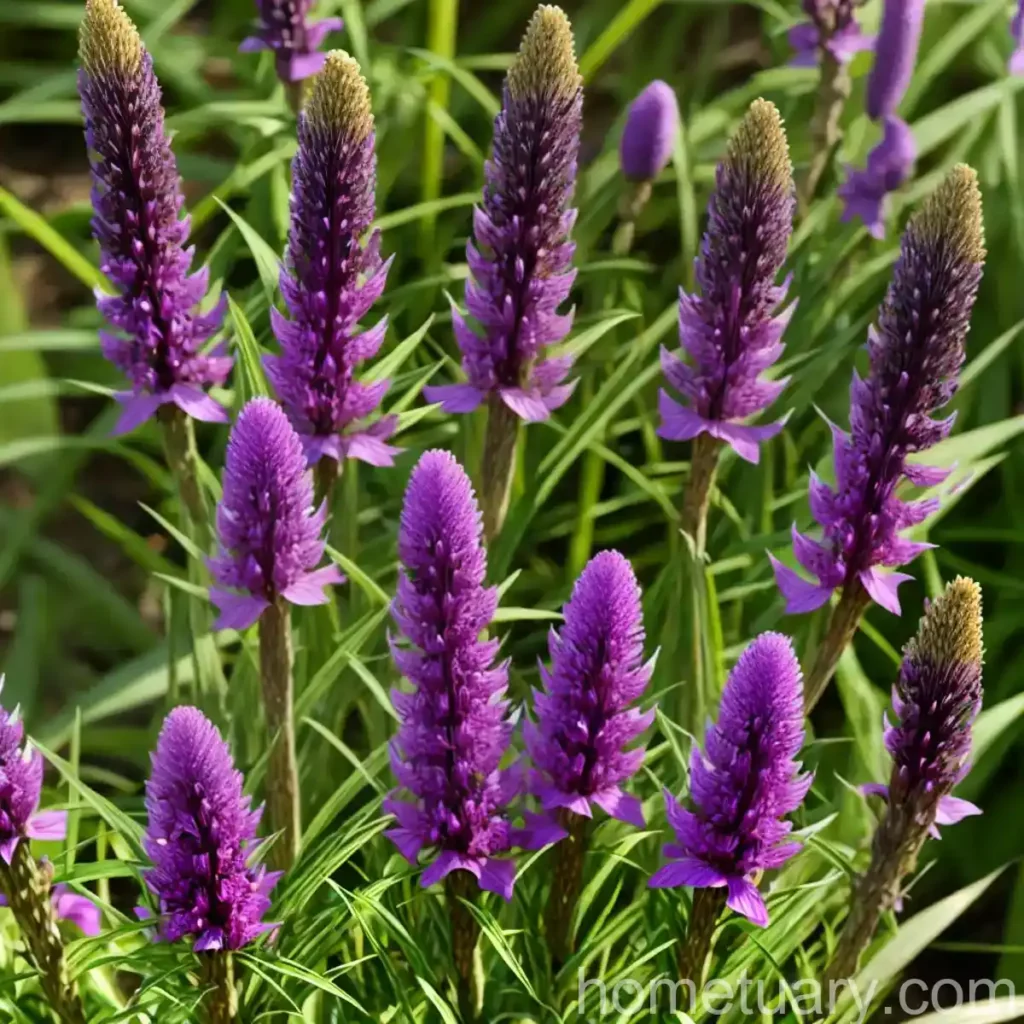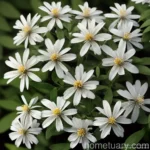A Comprehensive Guide to Button Snake Root (Liatris ligulistylis ‘Monarch’)
In the world of gardening and horticulture, the button snake root, scientifically known as Liatris ligulistylis ‘Monarch’, is a stunning and versatile plant that holds great appeal to both seasoned gardeners and beginners. Its unique characteristics, vibrant colors, and various uses make it a sought-after addition to gardens and landscapes. In this comprehensive guide, we will delve into all aspects of the button snake root, from its cultivation and care to its uses and benefits. Whether you are a gardening enthusiast, a landscaping professional, or simply someone looking to enrich your knowledge of plants, this guide will provide you with valuable insights into the captivating world of button snake root.
What is Button Snake Root?
The button snake root, or Liatris ligulistylis ‘Monarch’, is an herbaceous perennial plant that belongs to the Asteraceae family. It is indigenous to North America and is particularly prevalent in regions with moist to wet prairies and meadows. The plant is renowned for its striking appearance, characterized by tall, slender stems adorned with dense, tuft-like clusters of delicate, feathery flowers in shades of purple and pink.
Key Takeaways – Button Snake Root (Liatris ligulistylis ‘Monarch’)
Before diving into the specifics of cultivating and caring for button snake root, let’s explore the key takeaways associated with this enchanting plant.
- Plant Name: Button Snake Root (Liatris ligulistylis ‘Monarch’)
- Common Name: Button Snake Root, Monarch Liatris
- Scientific Name: Liatris ligulistylis ‘Monarch’
- Plant Type: Herbaceous Perennial
- Family: Asteraceae
- Native Habitat: North America
- Flower Color: Shades of Purple and Pink
- Water Needs: Moderate to High
- Sunlight Requirements: Full Sun to Partial Shade
- Soil Type: Well-Drained, Moist
- Height: 24-36 inches
- Spread: 12-18 inches
- USDA Hardiness Zones: 3-8
Cultivation and Care of Button Snake Root
1. Water
Button snake root thrives in moist to wet soil conditions, making it a great addition to rain gardens or areas with consistent moisture. While it can tolerate brief periods of drought, regular watering is essential for optimal growth and blooming. During periods of extended dryness, supplemental watering may be necessary to maintain the plant’s vitality.
2. Sunlight
In terms of sunlight requirements, button snake root flourishes in full sun to partial shade. It is important to ensure that the plant receives adequate sunlight to support robust flower production and overall vigor. When planted in partial shade, the plant may exhibit slightly elongated growth, but it will still bloom profusely, adding a touch of elegance to shaded garden areas.
3. Soil
The soil requirements for button snake root are relatively straightforward. It thrives in well-drained, moisture-retentive soil enriched with organic matter. Sandy loam or loamy soils are ideal for cultivating button snake root, as they offer a good balance of drainage and water retention. Additionally, maintaining a slightly acidic to neutral soil pH (6.0-7.5) is beneficial for the plant’s overall health and performance.
4. Fertilizer
When it comes to fertilization, button snake root generally does not require excessive supplementation. However, incorporating a balanced, slow-release fertilizer into the soil during the initial stages of growth can provide the plant with essential nutrients to support its development. Additionally, applying a light top-dressing of compost or organic mulch around the base of the plant in spring can contribute to improved soil structure and fertility.
5. Pruning
Pruning requirements for button snake root are minimal, as the plant tends to maintain a tidy and upright growth habit. Deadheading spent flowers can prolong the blooming period and encourage additional flower production. At the end of the growing season, cutting back the faded flower stalks can help tidy up the plant and prepare it for the dormant phase.
Propagation of Button Snake Root
Button snake root can be propagated through various methods, including division, seed sowing, and root cuttings. Each of these propagation techniques offers an opportunity to expand your button snake root population and share the beauty of this plant with others.
1. Division
Dividing established clumps of button snake root is a reliable and straightforward method of propagation. This process is best carried out in early spring before new growth emerges or in the fall when the plant is preparing for dormancy. By carefully separating the rhizomes and ensuring that each division has viable roots and shoots, you can successfully propagate multiple button snake root plants.
2. Seed Sowing
Collecting and sowing seeds from mature button snake root plants is an effective way to propagate new specimens. Sow the seeds in a prepared seedbed or containers filled with well-drained, moist soil. Cover the seeds lightly and maintain consistent moisture to support germination. Once the seedlings have developed a few sets of true leaves, they can be transplanted into their permanent growing locations.
3. Root Cuttings
Root cuttings offer another viable method for propagating button snake root. Using a sharp, clean knife, carefully slice sections of the plant’s roots and plant them in a suitable growing medium. Providing the right environmental conditions, including adequate moisture and warmth, can encourage the development of new shoots from the root cuttings.
Container Cultivation of Button Snake Root
While button snake root naturally thrives in garden and landscape settings, it can also be cultivated successfully in containers, allowing for greater flexibility in its placement and care.
1. Container Selection
When choosing containers for cultivating button snake root, opt for spacious, sturdy containers with adequate drainage holes. The volume of the container should accommodate the plant’s root system and promote healthy root development.
2. Potting Mix
Utilize a well-draining potting mix that mimics the plant’s preferred soil conditions. A blend of peat moss, perlite, and compost can create an ideal growing medium for button snake root in containers.
3. Watering and Maintenance
In container cultivation, it is crucial to monitor the plant’s moisture levels closely, as the soil in containers can dry out more rapidly than garden soil. Regular watering, sufficient sunlight, and occasional fertilization can support the plant’s growth and blooming in the container environment.
Popularity and Uses of Button Snake Root
Button snake root holds a special place in the hearts of gardeners, landscapers, and nature enthusiasts due to its remarkable beauty and versatility. Its popularity stems from several factors, including its ornamental value, ecological benefits, and potential uses in various settings.
1. Ornamental Value
As an ornamental plant, button snake root adds a touch of elegance and charm to gardens, meadows, and naturalistic landscapes. Its tall, slender stems and striking, tuft-like flower clusters create visually captivating displays, particularly when planted in groups or mixed perennial borders. The plant’s ability to attract pollinators further enhances its appeal, making it a valuable addition to wildlife-friendly gardens.
2. Ecological Benefits
Beyond its aesthetic qualities, button snake root offers notable ecological benefits. Its nectar-rich flowers serve as an important food source for pollinators, including butterflies, bees, and various beneficial insects. By planting button snake root, gardeners can contribute to the conservation of native pollinators, thereby supporting the overall health and biodiversity of their local ecosystems.
3. Naturalistic Landscapes
In naturalistic and prairie-style landscapes, button snake root is a favored choice due to its native habitat and adaptability to meadow-like settings. The plant lends a sense of authenticity to these landscapes while providing enduring beauty and ecological value.
Common Diseases and Pests
While button snake root is generally resilient and low-maintenance, it can be susceptible to certain diseases and pests that may impact its health and appearance.
Disease Diagnosis
Common foliage diseases, such as powdery mildew and leaf spot, can occasionally affect button snake root, particularly in humid or poorly ventilated conditions. The presence of discolored or spotted leaves, as well as powdery patches on the foliage, may indicate the onset of these diseases. Prompt identification and appropriate treatment measures, such as fungicidal sprays or cultural adjustments, can help manage disease issues effectively.
Common Pests
Insect pests, including aphids and spider mites, can infest button snake root plants, causing damage to the foliage and compromising overall plant health. Regular inspections and the use of insecticidal soaps or horticultural oils can help control pest populations and minimize their impact on the plant.
Botanist’s Tips for Growing Button Snake Root
As a botanist or plant enthusiast, there are various tips and best practices that can enhance your success in growing and caring for button snake root.
1. Soil Preparation
Prior to planting button snake root, ensure that the soil is well-prepared and enriched with organic matter to promote healthy root development and nutrient uptake. Amending the soil with compost and organic fertilizers can create an optimal growing environment for the plant.
2. Companion Planting
Pairing button snake root with complementary plants, such as prairie grasses, coneflowers, and other native perennials, can create visually appealing and ecologically beneficial plant combinations. Consider the plant’s mature height, flower color, and blooming season when selecting compatible companions for your button snake root garden.
3. Wildlife Habitat
Embrace the ecological significance of button snake root by integrating it into wildlife-friendly landscapes that support pollinators and beneficial insects. By providing a diverse array of nectar-rich plants, you can contribute to the creation of vibrant habitats for local wildlife species.
Fun Facts about Button Snake Root
Uncover some intriguing and captivating facts about button snake root that showcase its unique characteristics and ecological importance.
- The scientific name of button snake root, Liatris ligulistylis, is derived from the Greek word “liatris,” which means “delay,” referring to the delayed blooming period of some species in the genus.
- Button snake root’s feathery flower clusters are particularly appealing to pollinators, serving as valuable nectar sources for butterflies, moths, and bees.
- In traditional herbal medicine, certain Native American tribes used the roots of button snake root to prepare medicinal infusions believed to aid in digestive wellness and alleviate certain ailments.
Links to External Resources
For further exploration and in-depth information about button snake root, consider the following external resources:
- North Carolina State University Extension: Liatris ligulistylis ‘Monarch’
- Missouri Botanical Garden: Liatris ligulistylis ‘Monarch’
- University of Wisconsin-Madison Extension: Button Snake Root
- The United States Botanic Garden: Growing Native Plants
In conclusion, button snake root, or Liatris ligulistylis ‘Monarch’, stands as a captivating and beneficial addition to garden landscapes, conservation efforts, and naturalistic plantings. With its graceful appearance, ecological value, and versatile uses, this perennial plant has earned its place as a cherished and esteemed member of the botanical world. By understanding its cultivation, care requirements, and ecological significance, gardeners and plant enthusiasts can appreciate the beauty and contributions of button snake root to a greater extent. Whether adorning a cottage garden, a pollinator-friendly landscape, or a container display, the button snake root undoubtedly enriches its surroundings and captivates the hearts of all who encounter it.
So, embark on the journey of growing and nurturing button snake root, and revel in the splendor of this remarkable plant that continues to inspire and delight in the world of horticulture and beyond.















